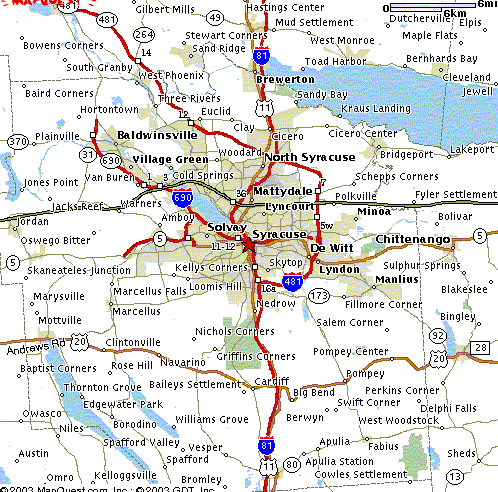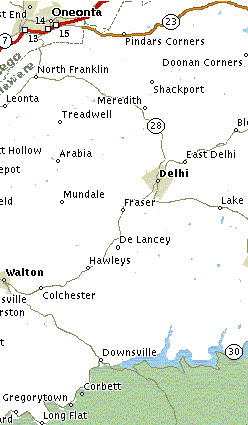
A place’s name is not the place itself, but it can be a snapshot of its history, if it’s old enough to have one — and I’m not unaware of how peculiarly American it must seem to others, to have “places” too young to have a history.
The standard local history of my hometown maintains that after a church was burnt down by a carpenter who wasn’t paid for his work, the town fathers were so embarrassed that they renamed the place in honor of a War of 1812 naval hero. The hero’s subsequent career didn’t add much to the village’s luster, but the name remains, pinning the town to the early 19th century.
Around it is a welter of places named for home by the ex-New Englanders who settled the region: Sherburne, Mt. Upton, Afton, Coventry and places with names borrowed from a vague understanding of Indian languages, like Otsego, Otego, Otsdawa, Chenango and Susquehanna.
When the interior of New York opened up after the Revolution, the state parceled out names as fast as Adam must have and the tracts given as pay to Continental Army soldiers drew a library of names from classical literature, then very much in fashion: Syracuse, Manilius (now Manlius), Clay, Cicero, Pompey, Apulia and many more. D.G. Rossiter of Ithaca posits that the names came from John Dryden's translation of Plutarch's "Lives of the Noble Grecians and Romans." Whatever -- The stately architecture of the region’s oldest buildings echoes the theme.

Among my favorite origin stories, though, is that of Delhi, a county seat in the northern Catskills: When the time came to give the narrow valley and the township around it a name in 1802, politicians thought to honor Judge Ebenezer Foote, a landowner and state senator known as “the great mogul” to his buddies — for wealth, but also because he was short and fat. They offered “Delhi,” it being the Indian potentate’s home.
Proponents of “Mapleton” grouched about the choice, and Erastus Root, a fellow politican who eventually became lieutenant governor (he was buried in Delhi for a while), quipped: “Dell-high, hell-high — better call it Foote-high!”
The maple lovers got Maple Grove on the East branch of the Delaware River, but Delhi became the county seat — graced by a lovely, warm-brick French Empire courthouse and the ample homes of well-to-do 19th-century lawyers — while Maple Grove remains only in the bitter memories of onetime residents; it was lost under the Pepacton reservoir.
Now, you should take origin stories with a grain of salt. They’re no more provable than Homer’s (another Upstate New York placename) tale of the Trojan Horse, but they’re just as important to the town’s identity, and you question them at your peril.
The names that ring my bells, however, are the ones that don’t go with “official” places. “Camel’s Hump” is the humplike pasture, now gone to scrub woods, that projects into a curve of the Susquehanna near my hometown; five miles east, Jackass Mountain Road climbs the same ridge, leaving you to wonder what pioneers thought that animal looked like. “Frasers” was a whistle stop and a creamery on a long-defunct rail line near Delhi. “Yaleville” is the ambitious name of a trio of houses along a country road near my hometown.
Near Delhi, “Meridale” boasts a post office at the foot of the long-defunct Catskill Turnpike, which once led settlers from the Hudson River deep into the forests of western New York. Someday, someone will explain to me where “the Barkaboom,” a track leading to fishermen’s camps near the Pepaction Reservoir, came from.
I think that back when a five-mile ride in the wagon was an all-morning expedition, little places mattered more. When you got to Coopers Corners after an hour of hot plodding up from the river valley to the south, you knew that you were almost to Yaleville and your long, 300-foot climb was almost done. Now it's just a couple of houses before the turnoff to the road that goes past the old dump, and you haven't accomplished anything because you've got much farther to go.
None of the places I think of as old are old by European standards. But,
disused now, they still hint of the lives and loves of people a lot like
me, and the names they bear still speak of hard work and hope, and they
never fail to stir a response in my own soul.